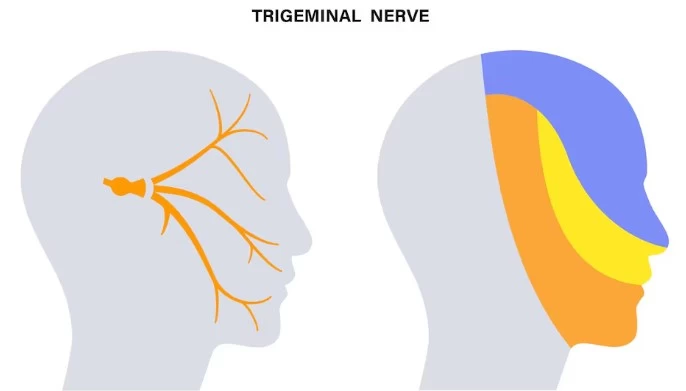
Calming the Storm on the Face: Effective Solutions for Trigeminal Neuralgia
- Calming the Storm on the Face: Effective Solutions for Trigeminal Neuralgia
- Treatment Approaches
- Treatment Planning
- Conclusion
Trigeminal neuralgia is a nerve disorder characterized by sudden and severe pain attacks in the facial region. This pain can radiate to various parts of the face and is often triggered by activities such as eating, talking, or brushing teeth. Patients frequently describe the pain as akin to an electric shock or a sudden stab. Although the exact source of the pain is often undetermined, it is sometimes due to irritation or damage to the trigeminal nerve, which manages sensory transmission in the face and has three main branches: the ophthalmic, maxillary, and mandibular.
As a pain specialist, I adopt a multidisciplinary approach to managing trigeminal neuralgia pain. In this article, I will share the treatment options and strategies I employ in treating this condition.
Treatment Approaches
- Medical Treatment: The first step in treating trigeminal neuralgia typically involves medication. Many patients can improve their quality of life without the need for surgical intervention when pain is managed with medications. Commonly used drugs include anticonvulsants (epilepsy medications). Notably, carbamazepine and gabapentin are highly effective in alleviating trigeminal neuralgia pain. These medications suppress nerve signals, thereby reducing pain severity. However, they can have side effects, particularly with long-term use, necessitating regular monitoring of patients. Additionally, antidepressants may assist in treating nerve-related pain. Tricyclic antidepressants reduce sensitivity in the nerves, which can help control trigeminal neuralgia pain. While these medications do not directly relieve pain, they can enhance the patient’s quality of life by increasing the pain threshold.
- Radiofrequency Ablation: If medical treatment is insufficient, radiofrequency ablation may be employed. This technique involves sending low-energy waves to the trigeminal nerve root to decrease its capacity to transmit pain signals. The procedure is minimally invasive and typically performed under local anesthesia, providing significant pain relief and a short recovery time.
- Microvascular Decompression: One surgical option is microvascular decompression, which aims to alleviate pressure on the trigeminal nerve. Often, a blood vessel exerts pressure on the nerve, leading to pain, and during the surgical procedure, this vessel is moved away from the nerve. While this method can yield successful results, it carries certain risks due to its surgical nature and is generally preferred when other treatment options have proven inadequate.
- Gamma Knife Radiosurgery: Gamma Knife is a non-invasive radiotherapy method recognized as an effective option for treating trigeminal neuralgia. It applies high doses of focused radiation to the nerve to suppress pain transmission. This non-invasive method often shows effects quickly, allowing patients to return to their daily lives shortly after the procedure.
- Botulinum Toxin (Botox) Injection: A newer method in treating trigeminal neuralgia involves Botox injections. Botox temporarily blocks pain transmission at the nerve endings, providing relief from pain attacks. This approach is a safe and effective alternative for patients who are resistant to medications or unsuitable for surgical treatment.
- Nerve Block: Trigeminal nerve block involves temporarily interrupting nerve transmission to relieve pain. This procedure is typically performed using local anesthetic or steroid injections. While nerve block can provide temporary pain relief, it does not offer a permanent solution, so it is often used in conjunction with other treatments.

Treatment Planning
The treatment plan for trigeminal neuralgia should be individualized for each patient. The appropriate treatment method is determined based on factors such as the patient’s age, pain severity, frequency of pain attacks, and overall quality of life. My goal in pain management is to offer the most effective treatment method that minimally impacts the patient’s daily life. Continuous monitoring of the patient and assessment of their response to treatment are crucial throughout the treatment process. In particular, monitoring side effects in patients on medication and revisiting the treatment protocol when necessary is important.
In some cases, combined treatment options may yield better results. For instance, combining medication with radiofrequency ablation can achieve longer-lasting pain control.
Conclusion
Trigeminal neuralgia is a challenging type of pain that can significantly diminish patients' quality of life. However, with the correct diagnosis and appropriate treatment approaches, it is possible to manage this pain and help patients return to a normal lifestyle. As a pain specialist, my aim is to utilize both modern medical methods and personalized approaches in treating my patients, ensuring they navigate this difficult process more comfortably. The key to successful treatment lies in adopting a holistic approach, providing both short-term and long-term solutions.
As I always emphasize, each patient’s situation is unique, and creating individualized treatment plans is essential for success in treating trigeminal neuralgia.

Assoc. Prof. Dr. Tülin Arıcı
Pain Specialist (Algology)





